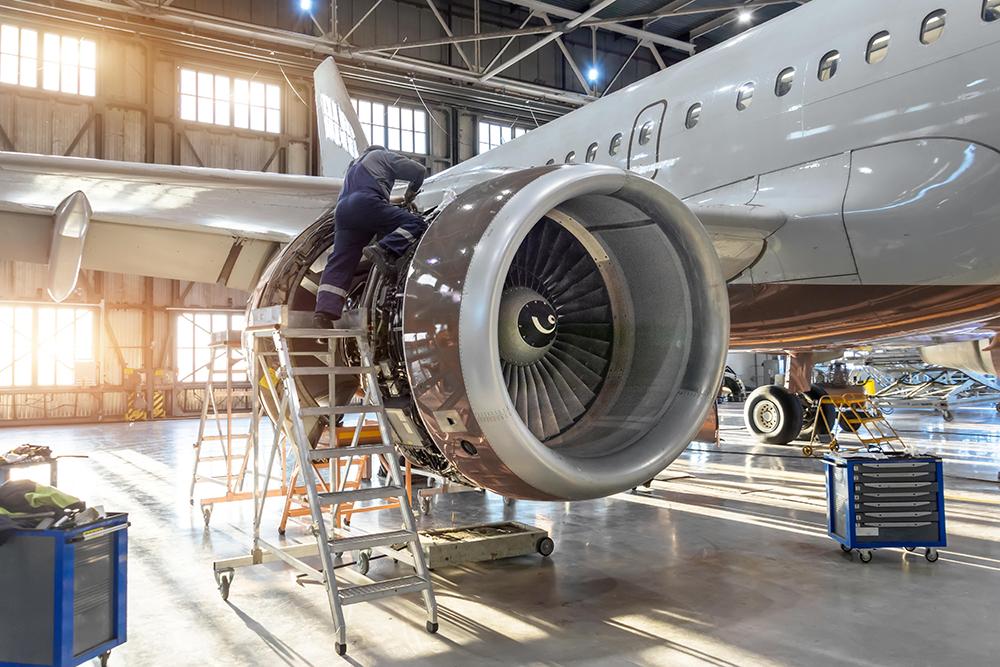
Warranty management negotiations are currently driven by either latest generation aircraft technology or cost and supply chain disruptions, according to Matt Davies, general manager at component repair and warranty support specialist Airinmar.
“In terms of latest generation technology, we have seen a significant increase in the volume and value of warranty claims associated with aircraft engines and their line replaceable units,” says Davis. “The cause of these increased warranty claims are driven by the well-publicized issues facing several of these new engines.”
Davis observes several trends that could arguably be a result of cost management pressures and supply chain disruptions at aircraft manufacturers and their OEMs. Firstly, he says the information and evidence required to support warranty claims has increased. “For example, where previously total labor hours to remedy a warranty defect may have been accepted, we are seeing more suppliers asking for task breakdowns,” says Davis. “In turn, we are seeing this further detail being used in counterarguments to reject or reduce legitimate claims.”
The lead time for adjudicating warranty claims has also increased on average. The general rule, often contracted, is that warranty claims should be adjudicated within 30 days.
Airinmar sees more OEMs asking for non-repairable or expendable parts to be returned for warranty evaluation, as opposed to accepting claims based on airline disposition and a compliant warranty claim with evidence, says Davis. “When warranty claims are accepted, we are now seeing a greater preference from the OEMs for providing replacement material and parts as a remedy as opposed to a credit,” he explains. “Whilst the ‘warranty benefit’ may be of equal value, a credit can be used immediately, whereas free-of-charge material and parts have a lead time and incur costs to handle.”
Finally, there are an increasing number of service bulletins that are applicable for warranty, where the airline is expected to purchase the material up-front and claim a credit when the modification is incorporated. Davis says the standard has been that the material is provided free of charge up-front.
As Davis suggests, many of these trends can delay, avoid or complicate the payment of warranty claims.
In February, Airinmar signed an extension of its aircraft warranty and value engineering services with Philippine Airlines (PAL). The agreement aims to deliver cost savings through supplier compliance with PAL’s contracted component repairs and to minimize component flight-hour out-of-scope repair charges.
Airinmar estimates that 5-15% of an airline’s total pool/flight-hour costs can be driven by out of scope over-and-above (O&A) charges. Davis elaborates: “These O&A costs can include customer induced damage, non-normal wear and tear, modifications, parts beyond economical repair (BER), parts deemed no fault found and equipment outside scope.”
Davis asserts that targeted and effective cost oversight scrutiny can significantly reduce these costs. He says Airinmar typically reduces the O&A spending by 10-20%. “This not only allows the airline to reduce costs, but in many cases the pool or flight-hour provider can save costs too,” Davis adds.
Airinmar provided a typical example where an MRO provider quoted a new replacement vacuum blower at $66,000 as an O&A because the cost to repair the returned part was $82,000, and therefore BER. Davis says the MRO provider can contractually charge this BER replacement cost to the airline. “However, Airinmar’s assessment of the O&A quote revealed that the cost driver—the housing assembly with a worn bearing bore—could be reworked in accordance with the manual instead of being replaced,” he says. “This reduced the cost of the repair below the BER threshold and meant that the O&A cost was removed completely.”





